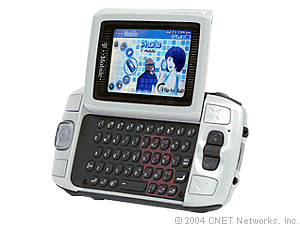How to create a php class? Here it is.
class myFunction
{
function getName()
{
return "Pedro";
}
function getAge()
{
return "18";
}
}
$mf = new myFunction();
$mf->getName();
Output:
Pedro
That's all folks. :D
How to create a php class? Here it is.
 Like most people these days, celebrities have cell phones too. Open up any gossip rag or surf over to your favorite entertainment news source, and you'll most likely spot a paparazzi shot of a celebrity chatting on a cell phone. A few cell phones stand out as being particularly popular among the glitterati. The most famous celebrity cell phone is of course T-Mobile's Sidekick II by Danger. Aside from being endorsed by the likes of Lindsay Lohan and Nicole Richie, the Sidekick II really hit the big time when Paris Hilton's device was hacked, its contents spilled across the Web. Following that is another smart phone, the currently maligned BlackBerry, the most recent of which is the RIM BlackBerry 8700c. Everyone from White House staffers to celebrities such as Naomi Campbell and Diddy has one of these, presumably to keep track of their busy schedules. The Motorola Razr V3 has also proved its popularity among the Hollywood set, what with complimentary Razr giveaways in this year's Oscar goodie bags, as well as a cameo in R. Kelly's recent "Trapped in the Closet" urban-opera video series. A newcomer to the scene is the Nokia 7280 lipstick-shaped phone, which was featured in Jennifer Lopez's "Get Right" video and also seen in the hands of many celebrities at this year's Oscars.
Like most people these days, celebrities have cell phones too. Open up any gossip rag or surf over to your favorite entertainment news source, and you'll most likely spot a paparazzi shot of a celebrity chatting on a cell phone. A few cell phones stand out as being particularly popular among the glitterati. The most famous celebrity cell phone is of course T-Mobile's Sidekick II by Danger. Aside from being endorsed by the likes of Lindsay Lohan and Nicole Richie, the Sidekick II really hit the big time when Paris Hilton's device was hacked, its contents spilled across the Web. Following that is another smart phone, the currently maligned BlackBerry, the most recent of which is the RIM BlackBerry 8700c. Everyone from White House staffers to celebrities such as Naomi Campbell and Diddy has one of these, presumably to keep track of their busy schedules. The Motorola Razr V3 has also proved its popularity among the Hollywood set, what with complimentary Razr giveaways in this year's Oscar goodie bags, as well as a cameo in R. Kelly's recent "Trapped in the Closet" urban-opera video series. A newcomer to the scene is the Nokia 7280 lipstick-shaped phone, which was featured in Jennifer Lopez's "Get Right" video and also seen in the hands of many celebrities at this year's Oscars. The technology behind Google's great results

Building upon the breakthrough work of B. F. Skinner, Page and Brin reasoned that low cost pigeon clusters (PCs) could be used to compute the relative value of web pages faster than human editors or machine-based algorithms. And while Google has dozens of engineers working to improve every aspect of our service on a daily basis, PigeonRank continues to provide the basis for all of our web search tools.
Technology Stuffs!!!

